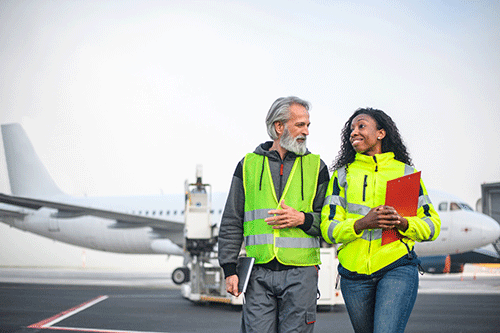Staff Reporter
African airlines had a 134.9% rise in May RPKs versus a year ago. May 2022 capacity was up 78.5% and load factor climbed 16.4 percentage points to 68.4%, the lowest among regions. Aviation traffic is measured in revenue passenger kilometers or RPKs.
These latest figures come from the International Air Transport Association (IATA) for May 2022 showing global recovery in air travel accelerated heading into the busy Northern Hemisphere summer travel season.
IATA has now reverted to year-on-year traffic comparisons, instead of comparisons with the 2019 period. Owing to the low traffic base in 2021, some markets show very high year-on-year growth rates, even if the size of these markets is still significantly smaller than they were in 2019.
Meanwhile total global traffic in May 2022 was up 83.1% compared to May 2021, largely driven by the strong recovery in international traffic. Global traffic is now at 68.7% of pre-crisis levels.
Domestic traffic for May 2022 was up 0.2% compared to the year-ago period. Significant improvements in many markets were masked by a 73.2% year-on-year decline in the Chinese domestic market due to Covid-19 related restrictions while May 2022 domestic traffic was 76.7% of May 2019. International traffic rose 325.8% versus May 2021. IATA noted that the easing of travel restrictions in most parts of Asia is accelerating the recovery of international travel. May 2022 international RPKs reached 64.1% of May 2019 levels.
“The travel recovery continues to gather momentum. People need to travel. And when governments remove Covid-19 restrictions, they do. Many major international route areas – including within Europe, and the Middle East-North America routes – are already exceeding pre-Covid-19 levels. Completely removing all Covid-19 restrictions is the way forward, with Australia being the latest to do so this week. The major exception to the optimism of this rebound in travel is China, which saw a dramatic 73.2% fall in domestic travel compared to the previous year. Its continuing zero-Covid policy is out-of-step with the rest of the world and it shows in the dramatically slower recovery of China-related travel,” said Willie Walsh, IATA’s Director General.
Walsh added that the the recovery in travel markets is no less than impressive. “As we accelerate towards the peak summer season in the Northern Hemisphere, strains in the system are appearing in some European and North American hubs. Nobody wants to see passengers suffering from delays or cancellations. But passengers can be confident that solutions are being urgently implemented. Airlines, airports and governments are working together, however, standing up the workforce needed to meet growing demand will take time and require patience in the few locations where the bottlenecks are the most severe,” said Walsh. In the longer-term, he advised governments to improve their understanding of how aviation operates and to work more closely with airports and airlines.
“Having created so much uncertainty with knee-jerk Covid-19 policy flipflops and avoiding most opportunities to work in unison based on global standards, their actions did little to enable a smooth ramping-up of activity. And it is unacceptable that the industry is now facing a potential punitive regulatory deluge as several governments fill their post-Covid-19 regulatory calendars. Aviation has delivered its best when governments and industry work together to agree and implement global standards. That axiom is as true post-Covid-19 as it was in the century before.”


